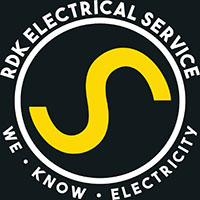Aluminum Wiring
If your home was built in the 60’s or early 70’s there’s a chance it has some (or in its entirety) aluminum wiring. Before I explain why this is a bad thing, its best to understand that not ALL aluminum is bad. The wires coming to your house from the pole…. all aluminum, The wiring coming down your house into your meter…. all aluminum. Sometimes the wiring to your stove……. aluminum. These are perfectly acceptable, common, and not part of our discussion today. So now that we have that out of the way, on we go.
So during the Vietnam war copper costs went through the roof (not to mention the shortage). The wire companies thought they had found a solution, not realizing the dangers that would soon follow. Their solution? Aluminum wiring. There are multiple problems with having aluminum wiring in your home.
Aluminum does not conduct electricity as freely as copper. Yes it does a pretty good job but it is not the same. It actually has 61% the conductivity as copper. Well, first of all that means that aluminum has more RESISTANCE than copper and resistance means HEAT. Heat is inevitable in your wiring, that’s what happens when current travels, but MORE heat is asking for trouble, mainly at poor connections.
Aluminum is very soft and when heated up becomes brittle. Very often times, the connections twisted inside wire nuts will break as they age and heat up. This is why the CPSC (Consumer Product Safety Commission) does not approve of the aluminum rated wire nuts.
Most devices that the wiring connects to are not also aluminum. When connected to a dissimilar metal, galvanic corrosion will eventually occur. This will result in a poor connection (resistance) which will also result in the connection heating up.
The main factor here are the loose connections, or resistance, that occurs when aluminum starts to corrode or break connections. To fully explain what happens, we will have to do a little math. The first thing to mention is that resistance has a unit of measurement (ohms) and when there is resistance, it is dissipated in the form of heat. When you have a connection at a junction or on a receptacle, that connection can have the entire circuits current traveling through that single point. Ideally this connection would not have any resistance, zero ohms, but in the event of a corroded connection or slight break, you could have up to 4 or 5 ohms. It doesn’t seem like a lot but let’s take a look at what is happening at the poor connection.
In a circuit with current flow, there is a certain amount of resistance. This can be calculated simply using ohms law, but this particular number is not important right now. What is important is knowing that when you have a certain amount of devices turned on in that circuit (we will say 5 light bulbs for simplification) there is both a set amount of current and resistance. For this example we are going to say that these 5 light bulbs also have a a current of 10 amps. If we add resistance to that 5 amps via a loose connection (5 ohms), that current flow actually reduces. Again for simplification we will say it reduces to 9 amps. So now we have a total current flow of 9 amps through the entire circuit, this includes the 5 ohm loose connection that we introduced. Lets take a look at what that 5 ohm loose connection is doing. We want to calculate the heat dissipation (in wattage) that’s occurring at the loose connection. In doing so we use this formula. Resistance X Current Squared= P or Watts.
5ohms X (9amps X 9amps) = 405 watts.
405 watts of heat at that connection. You know how hot a 60 watt bulb gets. Even a 100 watt bulb. This is a lot of heat, and in most cases this number can actually be higher. It all depends on what you have turned on in that circuit. This is why 95% of the time, the problem is at some sort of connection. It is very common to see burnt or completely melted receptacles (usually you can’t even see this until you remove the cover), burnt or completely melted wire nuts, or even melting light switches.
There are solutions to this problem. Ideally a complete re-wire of the house would be the best solution, however a homeowner may not always be able to afford that as it will be very costly and result in drywall damage that would need repaired (though we offer this service free in our quotes). There are other less costly options. If you have aluminum wiring in your home and would like to schedule a consultation to discuss means of repair, feel free to contact us via our contact form on our site, by emailing corey@rdkelectricalservice.com, or by calling us at 513-443-4RDK.
